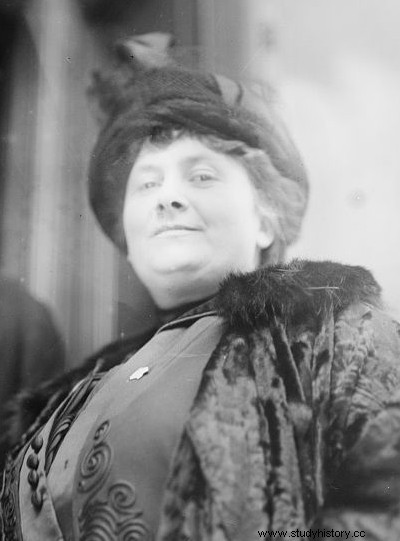Maria Montessori (1870 – 1952) was an Italian physician and pedagogue, known for the method of pedagogy that bears her name and which is the basis of the pedagogy of 22,000 schools worldwide.
Growing interest in pedagogy
 From a bourgeois family, Maria Montessori was born on August 31, 1870 in Chiaravalle, Italy, but grew up in Rome. Her father, an accountant in the public service, and her mother, raised her with strict discipline and destined her for a career as a teacher. During her studies, Maria quickly developed an interest in mathematics and science and, despite her father's strong disapproval, entered a technical school for boys. It was then that she decided to become a doctor and went to university. His relationship with his father, but also with other relatives, then deteriorates markedly, sometimes going as far as hostility.
From a bourgeois family, Maria Montessori was born on August 31, 1870 in Chiaravalle, Italy, but grew up in Rome. Her father, an accountant in the public service, and her mother, raised her with strict discipline and destined her for a career as a teacher. During her studies, Maria quickly developed an interest in mathematics and science and, despite her father's strong disapproval, entered a technical school for boys. It was then that she decided to become a doctor and went to university. His relationship with his father, but also with other relatives, then deteriorates markedly, sometimes going as far as hostility.
In 1896, Maria obtained her medical degree and took a job at the psychiatric clinic of the University of Rome. By observing children with mental disabilities, she realizes that they are not provided with games or objects to enable them to develop their abilities. Convinced that the problem of these children comes more from pedagogy than from a medical condition, Maria is passionate about the issue and studies the works of doctors and pedagogues such as Jean Itard or Édouard Séguin. In 1899, she spoke at a pedagogical congress in Turin, and subsequently began to be asked for conferences in Rome, but also in Paris, and began to study psychology and philosophy. In parallel with her research, she created a school of orthophrenia (the art of properly directing the intellectual faculties) and trained teachers there, while continuing to work with children with mental disabilities.
The Children's House of San Lorenzo
In 1901, Maria Montessori began to work with children (without disabilities) in their early childhood, and embarked on the creation of her teaching method. In 1907, in Rome, an organization had two buildings built in the popular district of San Lorenzo, and asked Maria to organize the lives of the children. A Children's House (Casa dei bambini ) was then created, serving as a school; parents have free access, and the teacher has the duty to live in the same building for better collaboration around the education of children. It is in this school that Maria develops and tests her teaching method. The Montessori method is based on supporting the natural development of the child, by providing him with an environment adapted to his own characteristics and those of his age. To the teachers she trains, she repeats “observe but not judge”. Emphasizing the importance of education from an early age, Montessori pedagogy is based on observing the child and respecting his needs.
The International Montessori Association
Quickly, the Casa dei bambini of San Lorenzo became known internationally and charities asked Maria Montessori to create children's homes. To publicize her method, participate in congresses and organize training for teachers, Maria travels all over the world, notably in the United States between 1914 and 1918. In 1929, Maria founded the International Montessori Association which aims to promote his teaching method.
In 1936, the Fascist Italian government banned Montessori pedagogy and closed schools. Maria then left Italy for Spain, then for the Netherlands when Franco came to power. During the Second World War, she moved to India where she developed, with the help of her son Mario, her method for school-age children. After the war, she stayed in India for a while before returning to live in the Netherlands.
Maria Montessori died in the Netherlands in 1952, at the age of 81, and her son continued her work. Today, there are over 22,000 Montessori schools worldwide.
Useful links
Biography of Maria Montessori
The Wikipedia page of Maria Montessori
Montessori Pedagogy
